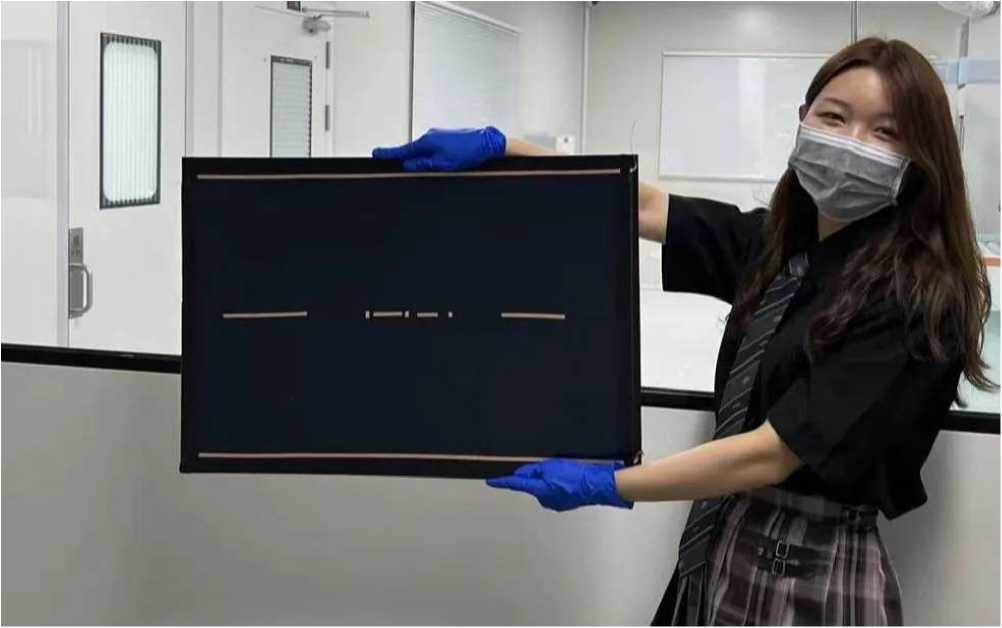On July 19,2022, Nikkei reported Dazheng mass production of 40 * 60cm perovskite solar cell module

A Chinese company has launched the world's first mass production of large modules of new solar cells. The new solar cells are bendable and ultra-thin flexible perovskite cells. Although the manufacturing cost is three times that of existing photovoltaic cells, it may be reduced to half that of silicon type cells in the future. At present China leads the way of perovskite cell in mass production.
DaZheng (Jiangsu) Micro Nano Technology Co.,Ltd has invested 80 million RMB (1.6 billion yen) to build a 10MW annual production line in Jiangsu Province, China. There are some of the largest photovoltaic suppliers in Jiangsu province. DaZheng produced 40cm x 60cm components, which will be cut into small pieces and shipped to smartphone and tablet manufacturers in China. DaZheng plans to invest another 200 million RMB in 2023 to expand its annual production capacity to 100MW.
Perovskite solar cells are light. The initial power conversion efficiency was about 10 percent, about half that of silicon cells. It can be used in various applications such as walls, windows and cars. Perovskite materials generally have a typical perovskite crystal structure (ABX3). Perovskite materials are composed of organic or inorganic groups at A, B and X sites, and their semiconducting properties can be tuned by adjusting the composition. Thanks to their direct band gap, the absorption coefficient is much higher than that of silicon. 500 nanometers perovskite thin films can be absorbed most of the visible light. In photovoltaic applications, photon-induced excitons have a longer lifetime, which brings high defect tolerance and low purity requirements of 98%. Meanwhile, perovskite thin films can be prepared by solution methods below 130 °C, which is much lower than that of crystalline silicon. Therefore, the complexity, material cost, and manufacturing energy consumption of perovskite solar cell production are lower than those of silicon-based solar cells and other existing photovoltaic technologies.
In the field of solar cells, Japanese companies such as Kyocera and Sharp used to have an advantage, but price competition has led to a deterioration in profitability and reduced business. As a result, Chinese and Korean companies have taken the lead in development. Professor Li Xin is a technician who had previously studied at the side of Mr. Miyazaka, and he continued his research after returning to China. At the same time, Mr. Miyazaka was invited to be the chief scientist and special consultant of DaZheng in 2017.
Related news
The following text is quoted from: Fujian Provincial Development and Reform Commission's First Quarter Research Service in Xiamen City - Fujian Provincial Development and Reform Commission
On January 19, 2024, Huang Wenhui, Deputy Secretary of the Xiamen Municipal Party Committee, Secretary of the Municipal Government Party Group, and Mayor, visited the Dazheng Micro Nano 100 MW Flexible (Lightweight) Component Mass Production Line for on-site research and guidance, to gain a detailed understanding of the company's production and operation, product research and development, capital increase and expansion, and other situations.
From December 20th to 22nd, 2023, as a leading enterprise in the localization of flexible perovskite batteries and precision coating equipment, Dazhong Micro Nano participated in the 5th Global Perovskite and Stacked Battery (Suzhou) Industrialization Forum and the establishment conference of the China International Association for the Promotion of Science and Technology Perovskite Industry Branch.








